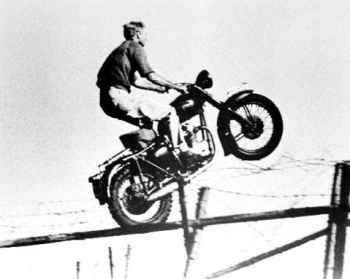 Punta Carretas is interesting not least because what is now a mall was once a prison, notorious for the incarceration and torture of political prisoners during the 1970s and 1980s. One could hardly wish for a better image of neoliberal transition: a marketplace founded on the site (and in the very building) of what was once an institution of state discipline.
Punta Carretas is interesting not least because what is now a mall was once a prison, notorious for the incarceration and torture of political prisoners during the 1970s and 1980s. One could hardly wish for a better image of neoliberal transition: a marketplace founded on the site (and in the very building) of what was once an institution of state discipline.Recycled in this way, the building is a place both of (perhaps unwelcome) memory, especially for its former prisoners, and also of collective amnesia, for the busy shopper. It presents a somewhat uneasy combination of these two temporalities--neoliberal present and dictatorial past--which are also two ways of thinking temporality, the scars of political memory or the eternal "now" of the commodity.
Susana is particularly interested in a famous escape from Punta Carretas prison when, in September 1971, over a hundred imprisoned Tupamaro guerrillas tunneled their way to freedom. Moreover, the escape unfolded another temporal doubling, as those burrowing their way out suddenly came across the tunnel that had been dug in the 1930s by anarchist prisoners, also seeking escape. Here, however, this resonance (or "dejà vu" as Susana observes, following Paolo Virno) between two different historical moments is felt as an empowerment, a potentialization, rather than a cancelling out.
There is much more than can be said here about lines of flight, immanence, exodus, creativity, the search for freedom, and so on--and Susana says much of it.
The fact, however, that much of her account is based on a reading of Eleuterio Fernández Huidobro's book La fuga de Punta Carretas made me realize that the prison escape memoir constitutes an entire sub-genre of Latin American testimonial literature.
For instance, there is also Claribel Alegría and DJ Flakoll's Tunnel to Canto Grande, about an MRTA escape from a Peruvian prison, and Ricardo Palma Salamanca's El gran rescate, about a helicopter rescue undertaken by Chile's FPMR.
(Meanwhile, the 1997 "Chavín de Huantar" operation, in which Peruvian special forces tunnelled in to the MRTA-held Japanese ambassador's residence, offers a kind of inverse movement.)
The only English-language comparison that immediately comes to mind would be the wealth of narratives about WWII escapes from German prisoner-of-war camps--such as Eric Williams's The Wooden Horse or the Steve McQueen vehicle The Great Escape. These stories are very different: they are mostly about stiff-upper-lip Englishness and fair play, though of course the "Great Escape" has now been adopted by England football fans.
But it might be worth doing a fuller survey of such escape literature to think further through the theme and the different possible modalities of flight, tunnelling, going underground. Or even jumping fences...

No comments:
Post a Comment